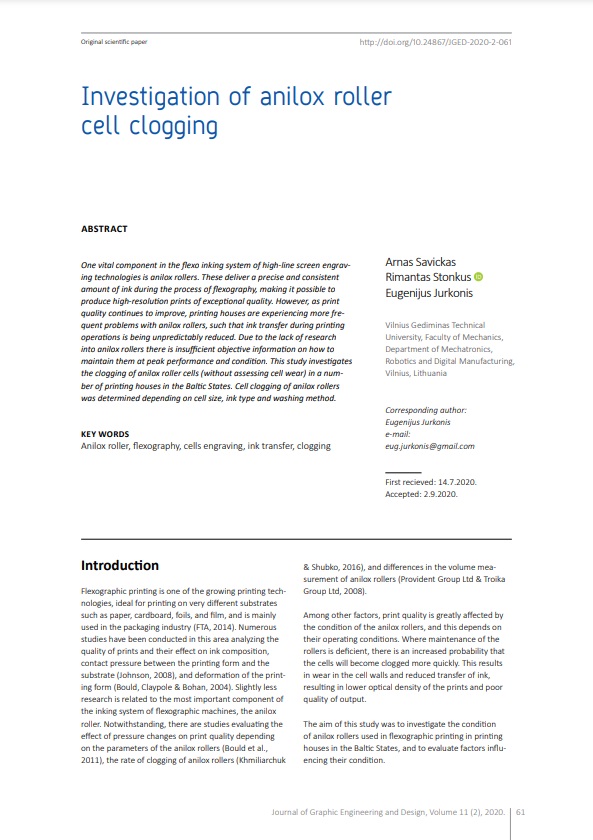
Published 2020-12-01
abstract views: 262 // Full text article (PDF): 239
Keywords
- Anilox roller,
- flexography,
- cells engraving,
- ink transfer,
- clogging
How to Cite
Copyright (c) 2020 © 2020 Authors. Published by the University of Novi Sad, Faculty of Technical Sciences, Department of Graphic Engineering and Design. This article is an open access article distributed under the terms and conditions of the Creative Commons Attribution license 3.0 Serbia.

This work is licensed under a Creative Commons Attribution 3.0 Unported License.
Abstract
-
One vital component in the flexo inking system of high-line screen engraving technologies is anilox rollers. These deliver a precise and consistent amount of ink during the process of flexography, making it possible to produce high-resolution prints of exceptional quality. However, as print quality continues to improve, printing houses are experiencing more frequent problems with anilox rollers, such that ink transfer during printing operations is being unpredictably reduced. Due to the lack of research into anilox rollers there is insufficient objective information on how to maintain them at peak performance and condition. This study investigates the clogging of anilox roller cells (without assessing cell wear) in a number of printing houses in the Baltic States. Cell clogging of anilox rollers was determined depending on cell size, ink type and washing method.


